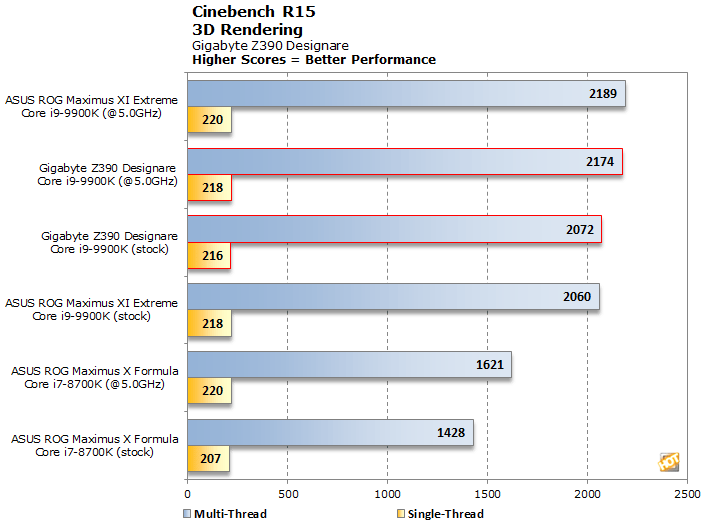Cinebench R15 is a 3D rendering performance test based on Cinema 4D from Maxon. Cinema 4D is a 3D rendering and animation suite used by animation houses and producers like Sony Animation and many others. It's very demanding of processor resources and is an excellent gauge of pure computational throughput.
 |
| Cinebench R15 |
| 3D Rendering |
|
This is a multi-threaded, multi-processor aware benchmark that renders a photorealistic 3D scene (from the viral "No Keyframes" animation by AixSponza). This scene makes use of various algorithms to stress all available processor cores. The rate at which each test system was able to render the entire scene is represented in the graph below.
The Z390 Designare has a strong showing here, trading blows with the Maximus XI Extreme. As expected the 8700K system included as a comparison falls behind on multi-threaded tests due to being 2 cores and 4 threads deficient. Overall the Designare does well, finding itself roughly within the margin for error in this test versus the $600 dollar Extreme board from
ASUS.
 |
| POV-Ray Performance |
| Ray Tracing |
|
POV-Ray, or the Persistence of Vision Ray-Tracer, is an open source tool for creating realistically lit 3D graphics artwork. We tested with POV-Ray's standard 'one-CPU' and 'all-CPU' benchmarking tools on all of our test machines, and recorded the scores reported for each. Results are measured in pixels-per-second throughput; higher scores equate to better performance.

Again, the Designare is within striking distance of the Extreme board, beating it in single threaded performance at stock while losing slightly on the multi-threaded test.
Overclocked, the Extreme board gains a little ground on the Designare but it would not be enough to notice a difference in a production environment.










